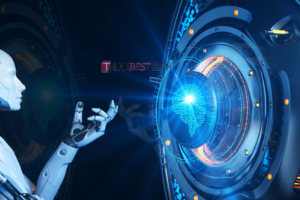Artificial intelligence (AI) is the science and engineering of making intelligent machines!
Artificial intelligence (AI) is the science and engineering of making intelligent machines, knowledgeable software agents, that resemble humans in their thoughts and actions. This involves the development of computer systems able to perform tasks that usually require human intelligence, such as visual perception, speech recognition, decision-making, and translation between languages. Such systems are used in various applications, including computer vision, speech recognition, robotics, and many other fields. AI research is highly technical and specialized, deeply divided into subfields that often fail to communicate with each other. Some of the divisions are logical (for example, focusing on specific approaches to designing intelligent agents), methodological (emphasizing knowledge representation, reasoning, or problem-solving), or cultural (categorizing AI as a branch of computer science).
The term “artificial intelligence” was first used in 1955 by computer scientist John McCarthy at a conference at Dartmouth College, where a group of researchers who had been working on the subject met to discuss the future of their field. They chose to call it “Artificial Intelligence” so that people wouldn’t think they were studying humans. The field of AI research was born at a conference in 1956. At the conference, attendees discussed whether machines could think and reason as humans do, and what that would mean for the future of computers. They also speculated about how long it would take to build intelligent machines and what such machines might look like. They concluded that even the simplest, most basic AI was still far away, but they were optimistic about its potential.

And thus began one of the most exciting and important fields in computer science. The field of AI research ha
s grown and evolved since 1956. Now, researchers are making great strides in understanding how intelligence works in humans and other animals. They’re also creating intelligent machines that can do things like play chess, drive cars, recognize faces, translate text from one language to another, and even make medical diagnoses.
AI is not just about computers anymore. It’s also about robots that can interact with people and other machines in the world around them; it’s about making machines more human-like so that people can relate to them better. One example of a recent breakthrough is Microsoft’s Project Malmo, which uses Minecraft as an open-ended platform for AI research. The project has allowed researchers to create intelligent agents that can learn how to do things in Minecraft, such as build structures and solve puzzles. In a blog post, Microsoft said that its researchers were able to train an AI agent in Minecraft to navigate the game world. “Our work focuses on general intelligence,” said Microsoft researcher Eric Horvitz. “We’re trying to build systems that can do anything you might want them to: drive cars, play games or even help people with their daily lives.
thinkbesttech



